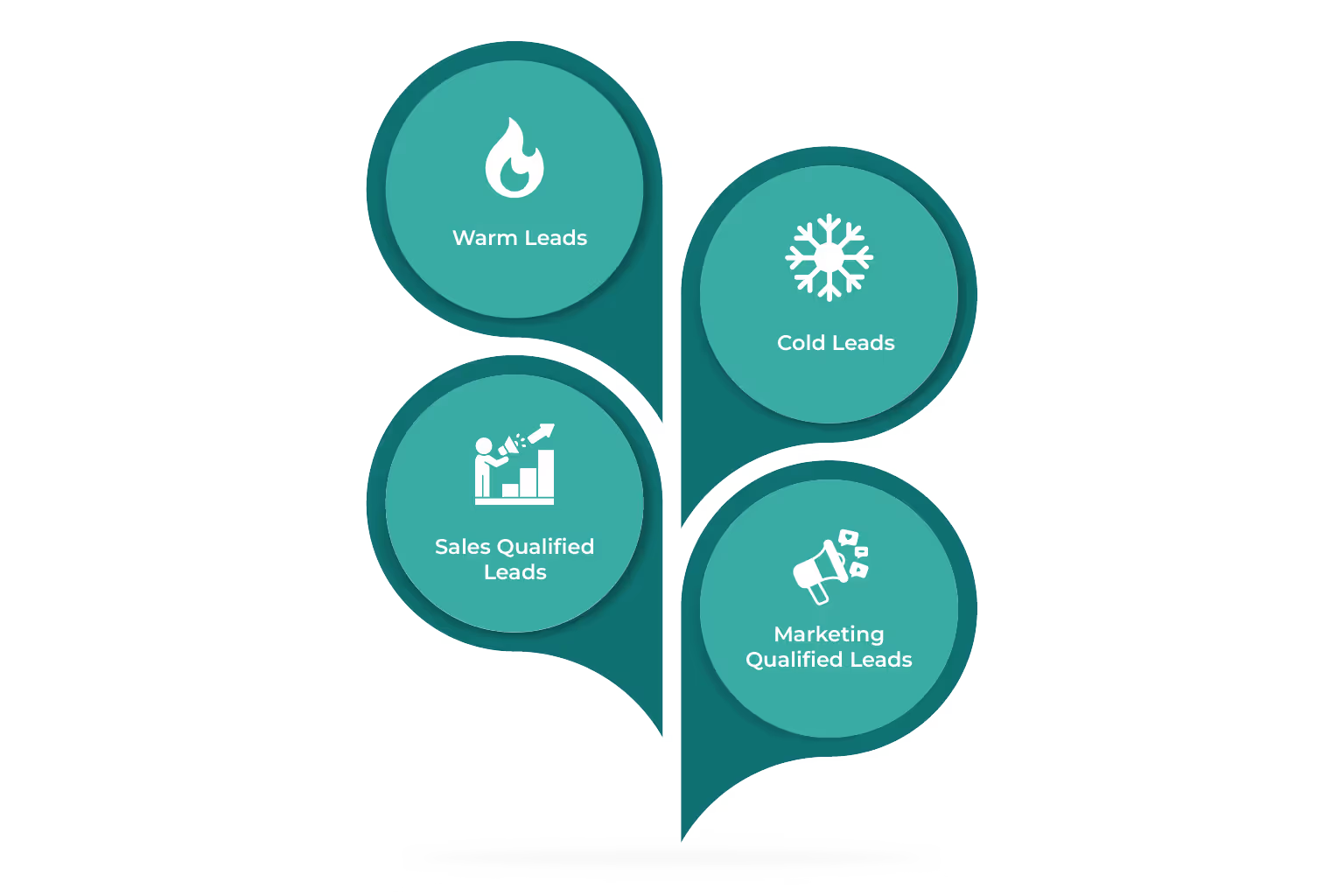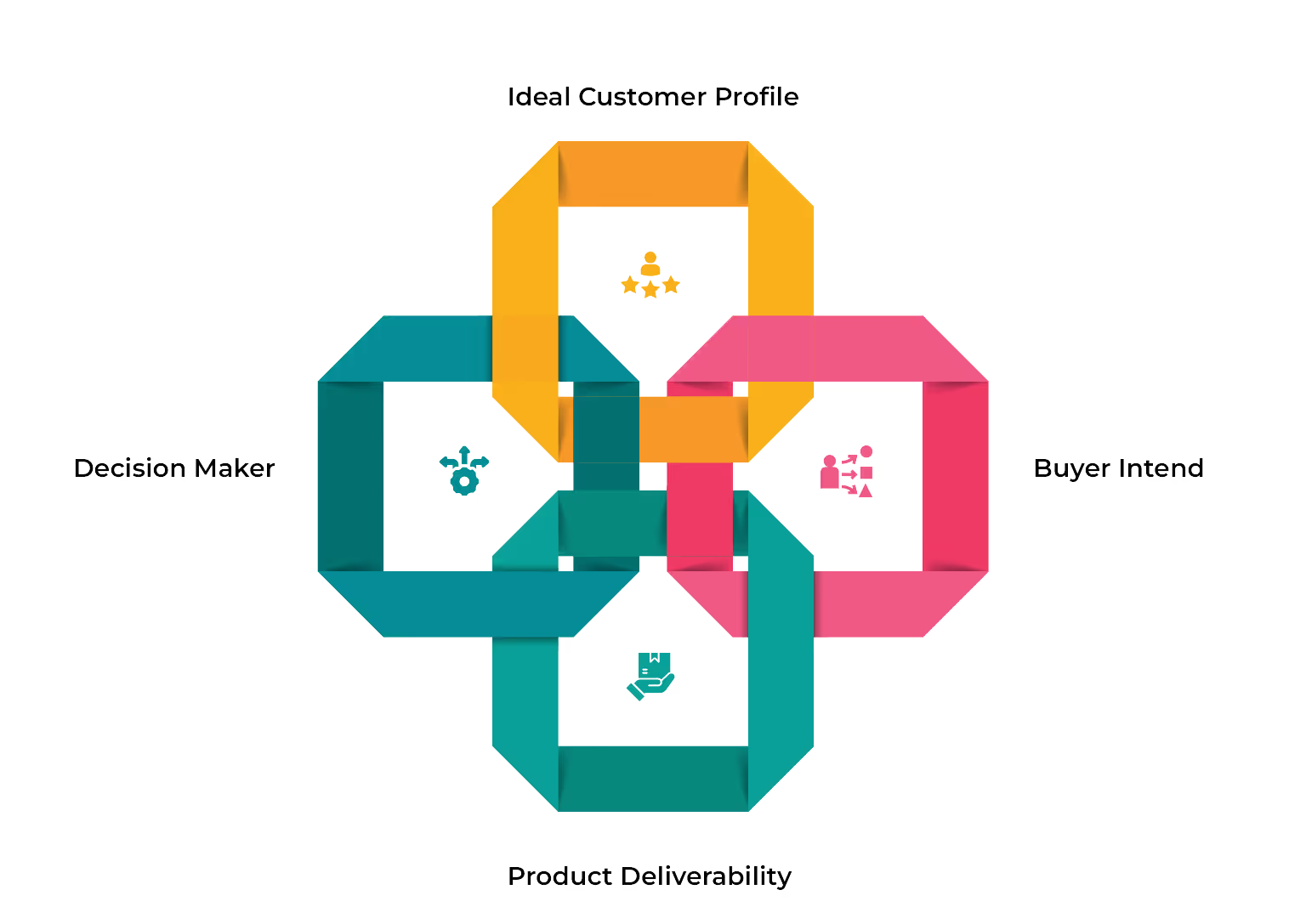
Blog
Sales Lead Types and Closing Strategies
September 13, 2023


Key Insights
“Make a customer, not a sale.” – Katherine Barchetti
Sales reps are in a rush to generate leads, qualify prospects, and make new customers.
But in this rush from the awareness stage of a sales funnel to sale, they forget the difference between these terms that we use to call a potential client.
While a lead is anyone who might have a chance of buying your product, a prospect is a client who falls under your customer demographics and a customer is someone with whom you have created a relationship that is bound to stay forever.
But in the entire customer journey, the sales lead generation is the most crucial part as it is the beginning of the conversation and relationship that will determine the end product.
In this article we will try to understand what a sales lead is, the various types of sales leads, and the characteristics of a sales lead. This will help sales reps understand their prospects and work smartly towards closing a deal.
For more scroll down!
What are sales leads?
A lead is an unqualified prospect who has the potential to be your customer, often residing at the top of your sales funnel, while the sales pipeline represents the structured journey these leads undergo, progressing through various stages, from initial awareness achieved through inbound marketing techniques, referrals, or outbound marketing efforts.
Upon qualifying the lead as a potential client who comes under the demographics of your ideal customer, they are approached through various sales and marketing channels for conversion.
Depending on the interest shown by the lead to your approaches they are classified as cold or warm leads, information qualified, sales qualified, or marketing qualified leads.
Categorizing them under various types helps sales reps and organizations determine their chances of conversion and decide how much effort must be put into closing a deal with them. Utilizing a visual representation like a sales process flowchart further enhances the clarity in understanding lead progression and facilitates strategic decision-making.
Types of sales leads
Knowing how likely your sales leads are to convert is essential for making the best use of your time, energy, and resources while trying to close a deal.
So here are a few types of sales leads that you must know:

- Cold Leads
A cold lead is a potential customer who fits your ideal customer profile but is not aware of your business or product, often occupying the top part of the sales funnel and posing a significant challenge to convert, making them similar to a Non-Recoverable Draw in terms of initial engagement.
Cold leads require building relationships from scratch, initiating the first steps of a potential sales conversation. From brand recognition to trust building, it's a long process that requires the consistent and patient effort of the sales reps for conversion and closing of deals.
- Warm Leads
Warm leads are aware of your brand, having encountered your business or product through ads, social media posts, blogs, referrals from peers, etc., creating a solid foundation for sales efforts, often aligning with effective Sales Compensation Plans to incentivize conversion and engagement strategies.
Warm leads are therefore easier to convert because they already know about you and will be decisive whether your product is required and suitable for their operations. This makes their conversion and closing of deals faster.
- Marketing Qualified Leads
Marketing qualified leads(MQL) are the sales leads that the marketing team has qualified as potential customers. MQLs will be aware of the company as they have come across the brand through any of the marketing strategies like blogs, social media posts, or other ads.
The marketing team checks the path the sales lead took to reach out to the company and qualifies whether they are prospects the sales team can reach out to for further communication, in accordance with their respective sales team roles and responsibilities.

- Sales Qualified Leads
When the sales team qualifies a potential client as a lead it's called a sales-qualified lead (SQL). An SQL is a step ahead of the MQL. While the MQL is aware of the brand, SQL has shown interest in buying the product.
They might be approached by the sales reps because they have either shown interest, require the product, or have the budget to invest in it. These criteria qualify them to be approached and thus have a higher conversion rate than other leads.
Sales reps must be clear about the position their different sales leads examples have in a sales pipeline as well as prioritize them based on types of lead with examples to ensure positive results.
For further read on strategies for converting leads check A Comprehensive Guide to Salesforce Leads and Contacts
What do you need in a sales lead?
A sales lead must be qualified to ensure that your efforts don't go futile and that there is a positive result at the end of hard work.
So here are a few things you must look into your sales leads to determine their qualifications as your potential client.

- Ideal Customer Profile
Your sales lead must first qualify as your ideal customer profile (ICP). An ICP defines the characteristics expected from your potential client. It can be their industry, company size, employee number, geographical location, etc. When your lead fills all these checklists they can be considered your ideal customer who has a higher chance of getting converted.
- Buyer Intend
A potential sales lead requires a buyer's intent. They must be interested in your product and have plans to purchase rather than booking a demo for exploring. Sales reps must qualify their leads based on buying chances so that the effort and time they put in will have a return.
- Product Deliverability
Sales reps must ensure that their product is equipped to deliver solutions for the challenges the client faces. This means that the solution must have the bandwidth to resolve the pain points of the client. Both the sales rep and the client must be on the same page in the problem-solving process.
- Decision Maker
The sales lead must ideally be the key decision maker about the product or service you provide within the marketing and sales funnels. Building relations with the key stakeholders will ensure that there is no lag in the decision-making process, that conversion happens faster, and that sales reps have a higher closing of deals.
Noting the key points in the sales journey of a customer will help sales reps in optimizing their sales process.
For further reading on sales check Sales in Motion: The Sales Pipeline.
Conclusion
Qualifying leads are a crucial part of the entire sales process.
A sales rep must require an ample number of leads in their sales pipeline to ensure that through the course of the customer journey, they have enough numbers to close their deals, meet their targets, and be eligible for incentive compensation.
Hence, generating leads, qualifying them as prospects, and taking them along the pipeline to close deals must be executed systematically to ensure optimal efficiency and output, especially when considering the nuances of B2B sales vs B2C sales environments.
Sales reps must be efficient in identifying the different types of leads in sales and working towards closing deals with them. These achievements they make must be recognized and rewarded so that they maintain and improve their sales performance.
Automating the incentive compensation management ensures that the documentation, calculation, and transaction are done transparently.
Kennect builds, runs, and automates your incentive compensation plans to create transparency and achieve operational efficiency.
ReKennect : Stay ahead of the curve!
Subscribe to our bi-weekly newsletter packed with latest trends and insights on incentives.
Thank you! Your submission has been received!
Oops! Something went wrong while submitting the form.
Your data is in safe hands. Check out our Privacy policy for more info








%20(1)%20(1).avif)







